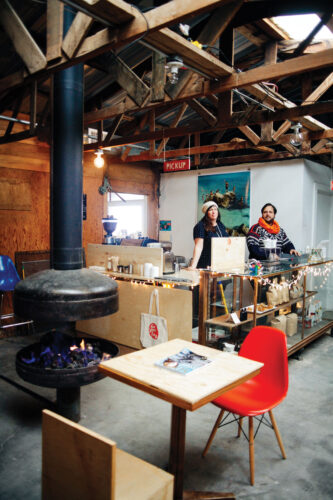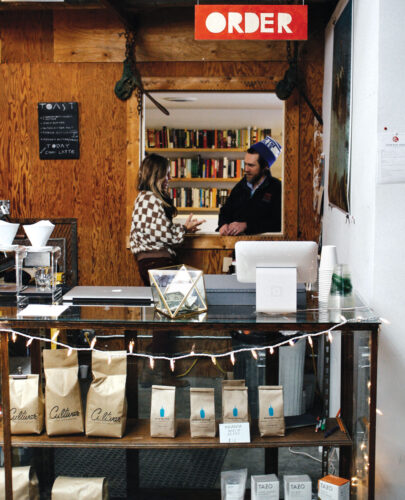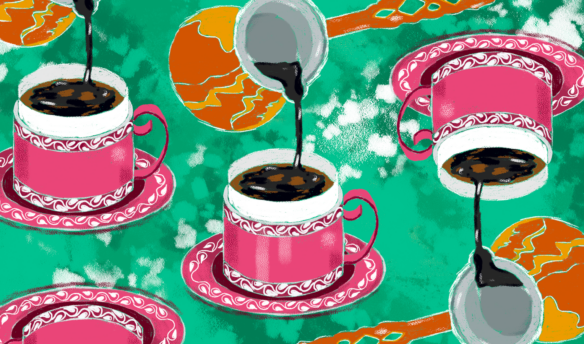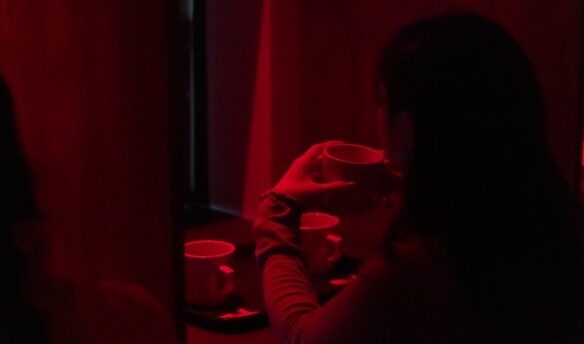[T]he high desert city of Marfa in West Texas is unique in several ways. Beginning with the weird, Marfa is famed as a vantage point for a mysterious apparition of bright, orb-like lights that appear in the remote desert at night, which some attribute to the exciting unknown, others to distant cars. The city hosts a festival in celebration of The Marfa Lights each year.

Like many artists who came before, it was in this dreamy atmosphere that Bay Area musicians and designers Simone Rubi and Robert Gungor sought inspiration. After spending time in Marfa recording an album, the two packed up their belongings in California, trading in city life for the expansive space to create. Though happy as new Marfans, the former baristas quickly realized that something crucial was missing.

“Marfa’s such a small town,” says Robert. “There was no real third space.”
Seeing a need for specialty coffee, the duo called up Blue Bottle Coffee in Oakland and requested permission to serve their coffee in a café in Marfa. The roaster agreed, Simone and Robert flew back for training, and in June they launched Do Your Thing—Marfa’s one and only specialty café, a warm community space that immediately attracted the city’s creatives like under-caffeinated moths to a flame.
“When we first opened I had a lady come behind the bar, hug me, and say, ‘Thank you,’” says Robert.
“In a lot of cities its sort of dime a dozen these days with specialty coffee, but since it’s never been here, people are so enthusiastic and happy,” says Simone. “And it keeps us inspired to have that response.”

The space is small—about eighteen people can be seated comfortably at a time—and usually packed. Locals and visitors alike sip Blue Bottle espresso and pour-overs featuring Dallas’ Cultivar Coffee Roasters, munching organic breakfast and lunch crafted by Simone and a rotation of guest chefs from out of town. Behind the hardware store’s original glass case, fresh baked goods are set out each morning and quickly bought up.

“It’s such an art destination, you feel like you’re in a cultural center,” says Simone. With its organic evolution, its artistic tilt, and its repurposed space, Do Your Thing fits snugly into Marfa’s cultural identity. Photography from visiting artists grace the walls, usually vivid images of beaches and green scenery, a contrast to the barren landscape outside. Splashes of bright red, the shop’s signature color, liven up the rustic interior. Simone and Robert even started a barista-in-residence program, where artists can move to Marfa, live in their guestroom, work four shifts a week at the shop, and focus on creative pursuits.

—Regan Crisp is Fresh Cup’s associate editor. Photos by Simone Rubi and Cory Van Dyke.















